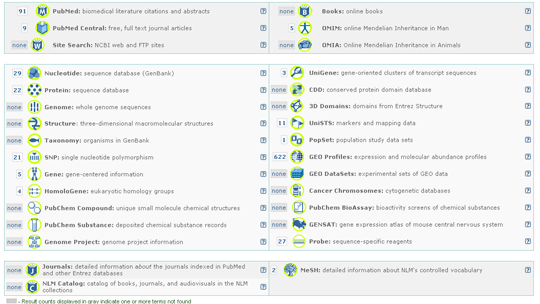Current genetics
Multimedia E-textbook of medical biology, genetics and genomicsCommented Internet Links
Before attending to the specific categories of links and their brief descriptions, we would like to mention a project clearly standing out and above any category, being truly unique among open and free distribution of scientific information and education - the MIT's OpenCourseWare (http://ocw.mit.edu/OcwWeb/index.htm) of Massachusetts Institute of Technology represents free and open educational resource for faculty, students, and self-learners around the world. Up to now, over 1,200 courses have been published on-line ranging from media science to nuclear engineering. In biology and genetics, the written as well as multi-media materials are published, again in a wide thematic range - from introductory biology to specialized courses on systems biology or functional genomics. Also available from MIT's OpenCourseWare is a list of links to similar endeavours worldwide.
Without any doubt, the major source of relevant genetic and genomic information is the internet portal National Center for Biotechnology Information, U.S. National Library of Medicine - NCBI (http://www.ncbi.nlm.nih.gov/). In one place we can find multitude of databases, searchable individually or all at once:

Fig. The result of a query "apoA5" in all NCBI databases.
Bibliographic databases
- ENTREZ PUBMED http://www.ncbi.nlm.nih.gov/entrez/ is probably the first site you will head to in case you need information about published work related to any biomedical topic. Part of NCBI.
-
SCIRUS http://www.scirus.com is a robust search engine, in its own words ". Driven by the latest search engine technology, Scirus searches over 200 million science-specific Web pages, enabling you to quickly:
- Pinpoint scientific, scholarly, technical and medical data on the Web.
- Find the latest reports, peer-reviewed articles, patents, pre prints and journals that other search engines miss.
- Offer unique functionalities designed for scientists and researchers.
- Biomed Central http://www.biomedcentral.com/ is an independent publishing house committed to providing immediate open access to peer-reviewed biomedical research. All original research articles published by BioMed Central are made freely and permanently accessible online immediately upon publication. Authors publishing with BioMed Central retain the copyright to their work, licensing it under the Creative Commons Attribution License.
Global Databases - Genes
- NCBI ENTREZ GENE http://www.ncbi.nlm.nih.gov/entrez/query.fcgi?db=gene - part of NCBI.
-
GENECARDS http://www.genecards.org/
GeneCards® is an integrated database of human genes that includes automatically-mined genomic, proteomic and transcriptomic information, as well as orthologies, disease relationships, SNPs, gene expression, gene function and more. - GeneLynx http://www.genelynx.org/ GeneLynx is a portal to a collection of hyperlinks for each gene within three different genomes, i.e. that of human and two major mammalian models, the rat and the mouse. It is implemented as an easily extensible relational database with a straightforward user interface.
Global Databases - Proteins
SWISS-PROT Protein Sequence Database http://www.expasy.org/sprot/
The data in Swiss-Prot are derived from translations of DNA sequences from the EMBL Nucleotide Sequence Database, adapted from the Protein Identification Resource (PIR) collection, extracted from the literature and directly submitted by researchers. It contains high-quality annotation,is non-redundant, and cross-referenced to several other databases, notably the EMBL nucleotide sequence database, PROSITE pattern database and PDB. SWISS-PROT is a curated protein sequence database which strives to provide a high level of annotation (such as the description of the function of a protein, its domain structure, post-translational modifications, variants, etc), a minimal level of redundancy and a high level of integration with other databases.
Protein Databank (PDB) http://www.pdb.org/pdb/home/home.do
An Information Portal to Biological Macromolecular Structures" contains a wordwide collection of protein and other macromolecule structures solved in most cases using x-ray crystallography or nuclear magnetic resonance (NMR). It is generally difficult if not impossible to accurately predict the protein threedimensional (3D) structure from the primary structure (aminoacid sequence), so the structures are solved experimentally on a one-to-one basis. Despite the technical and economical hurdles imposed, many structure-solving projects are under way, as a 3D structure often provides very important insight into the protein function.